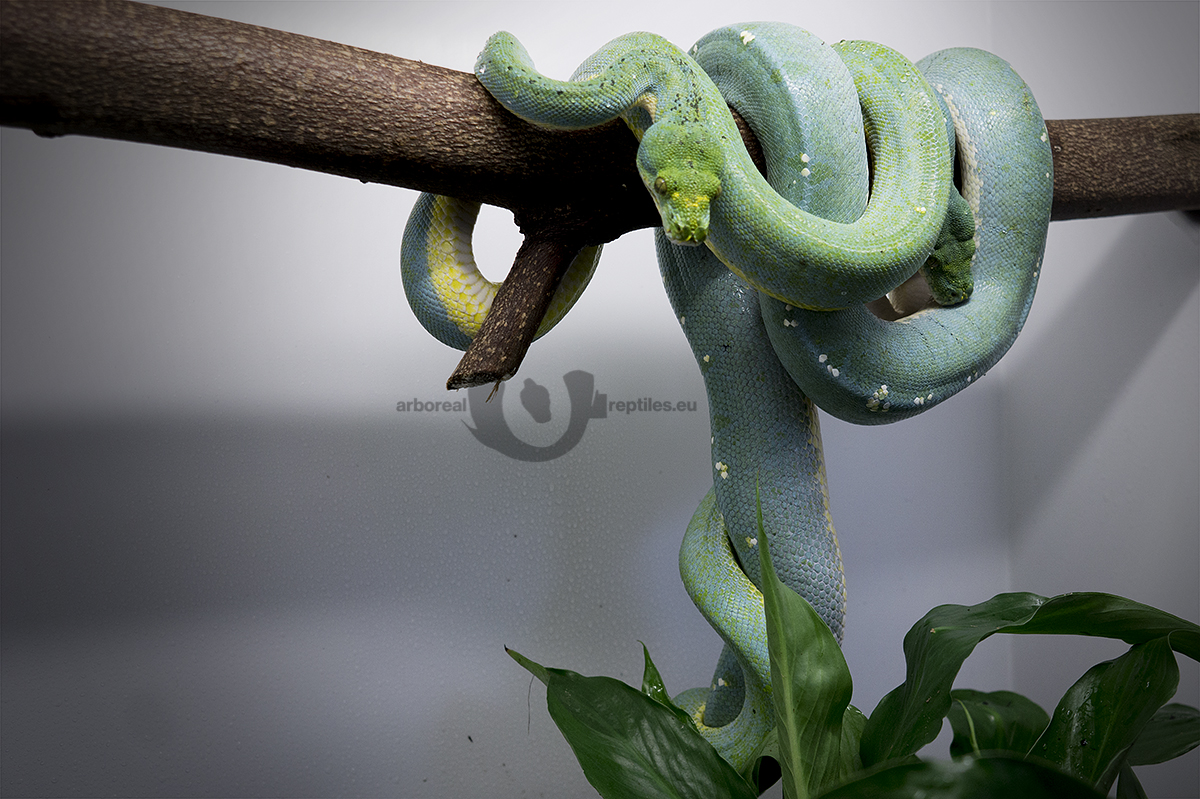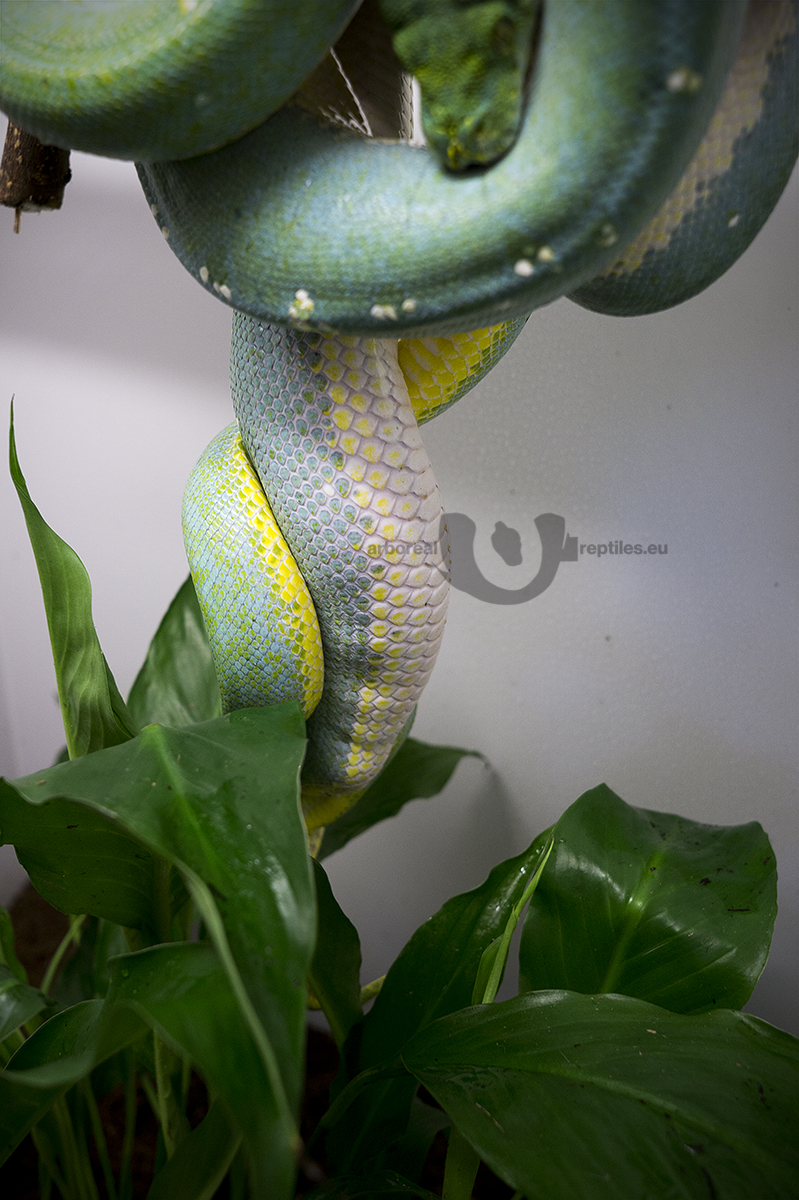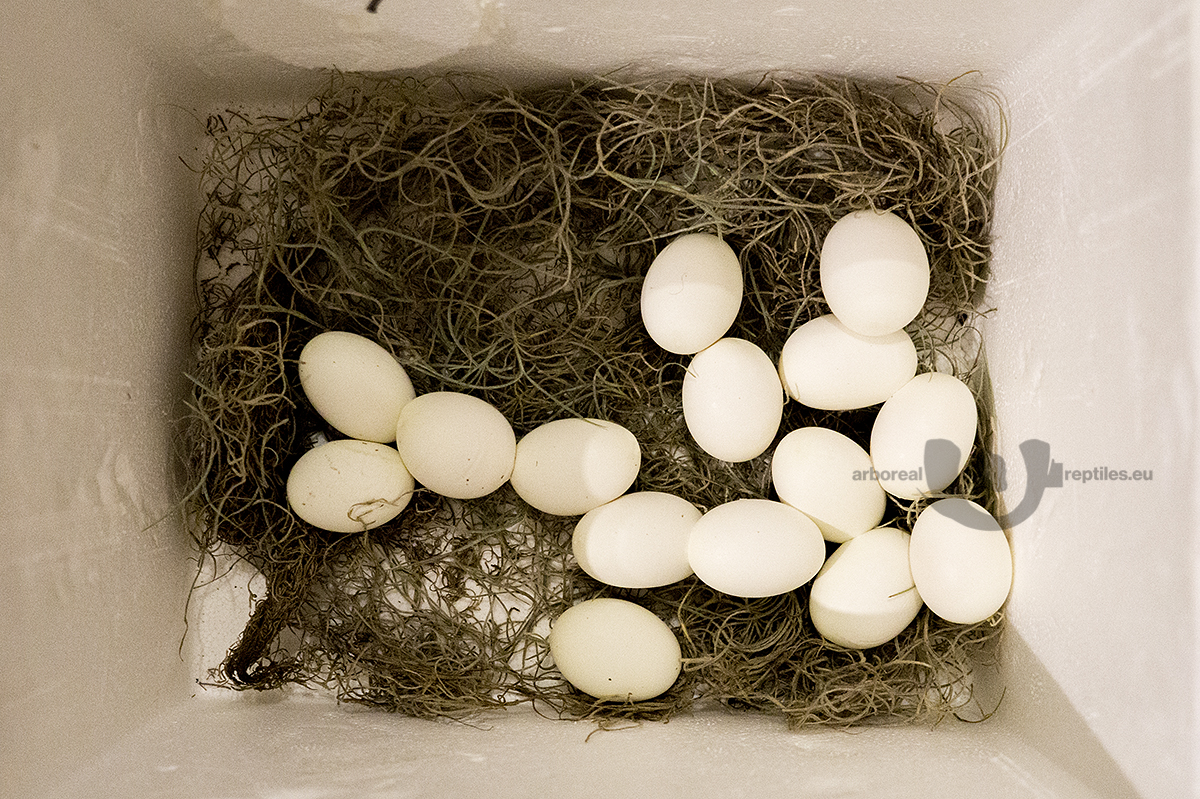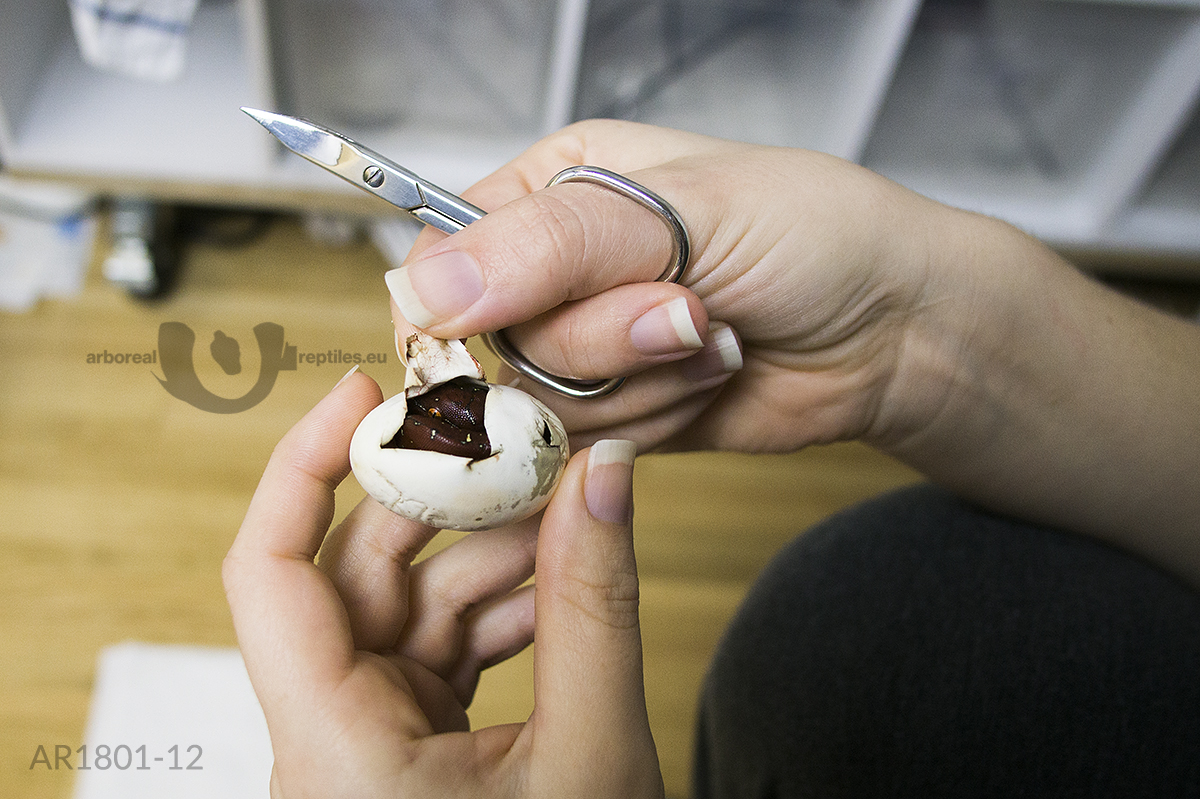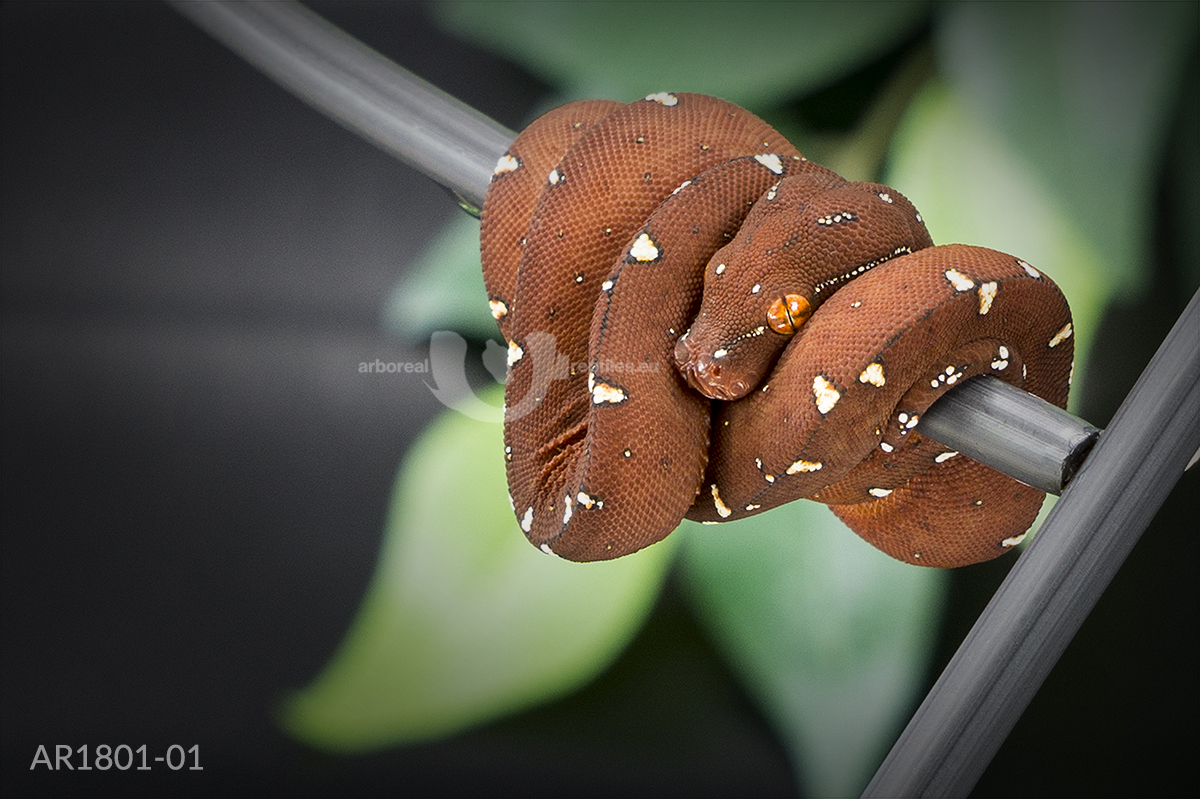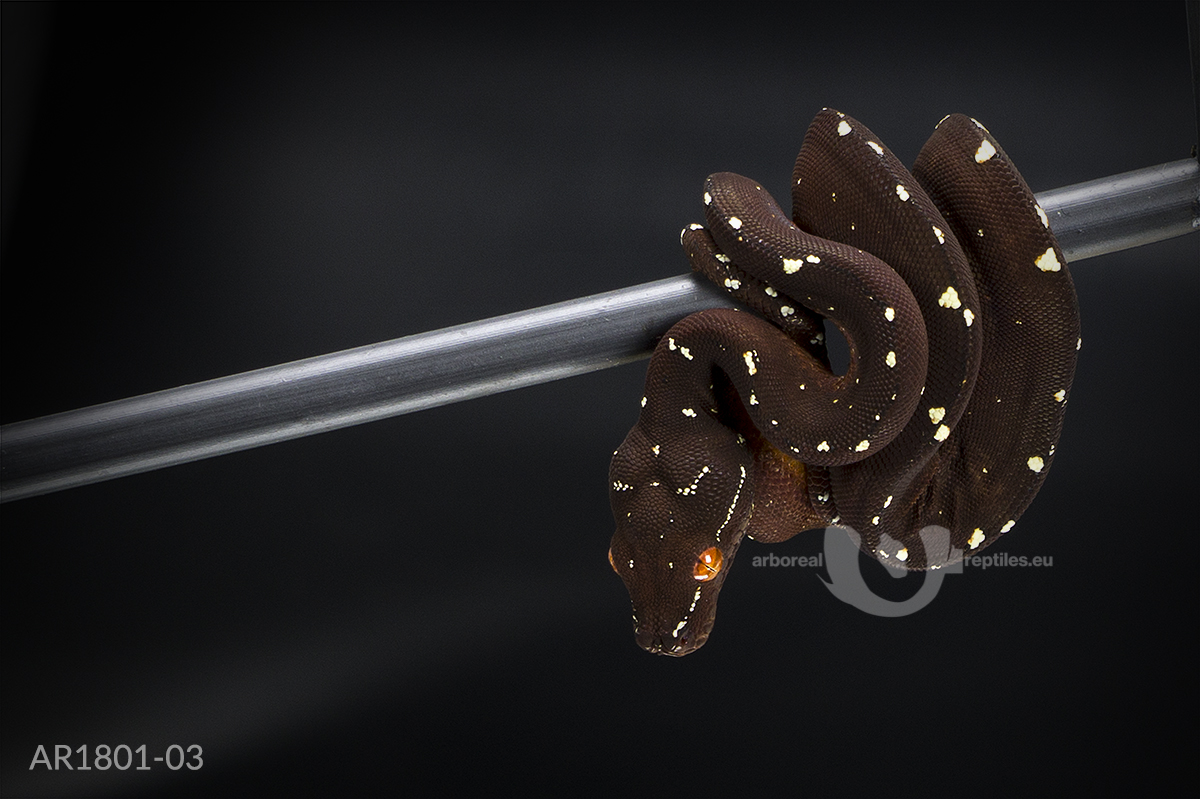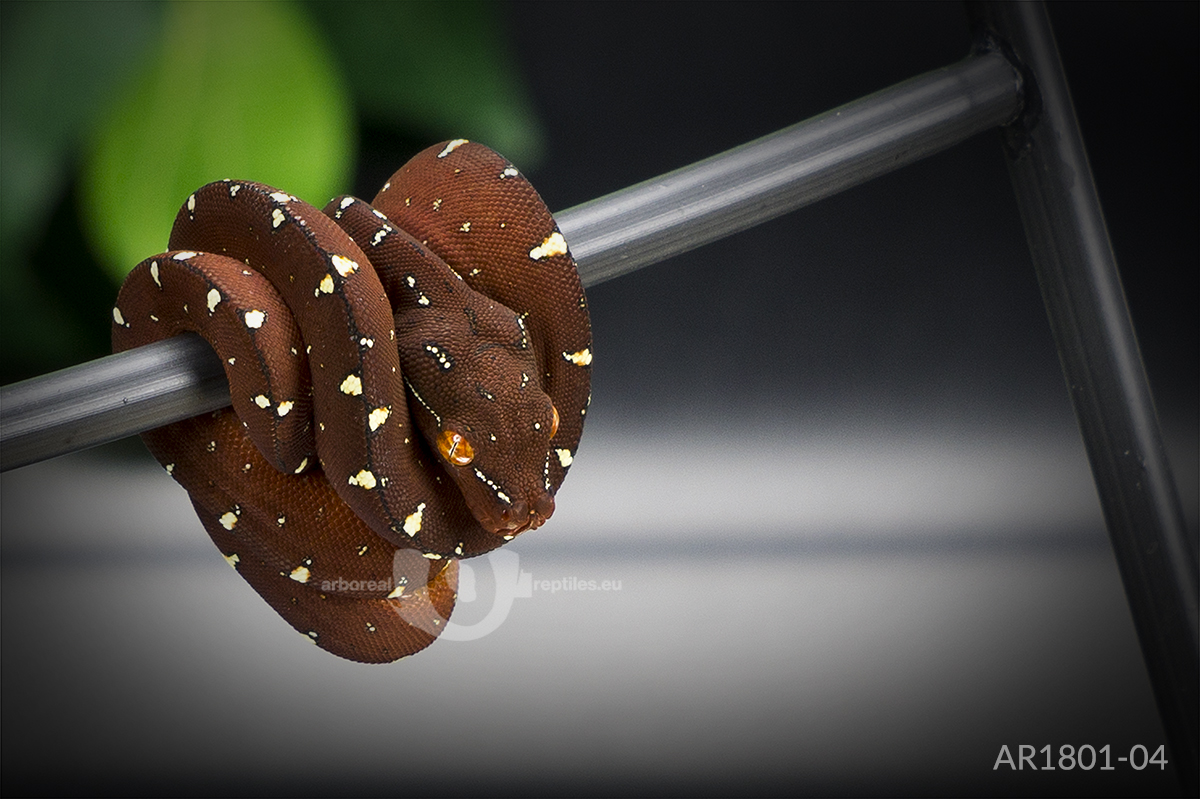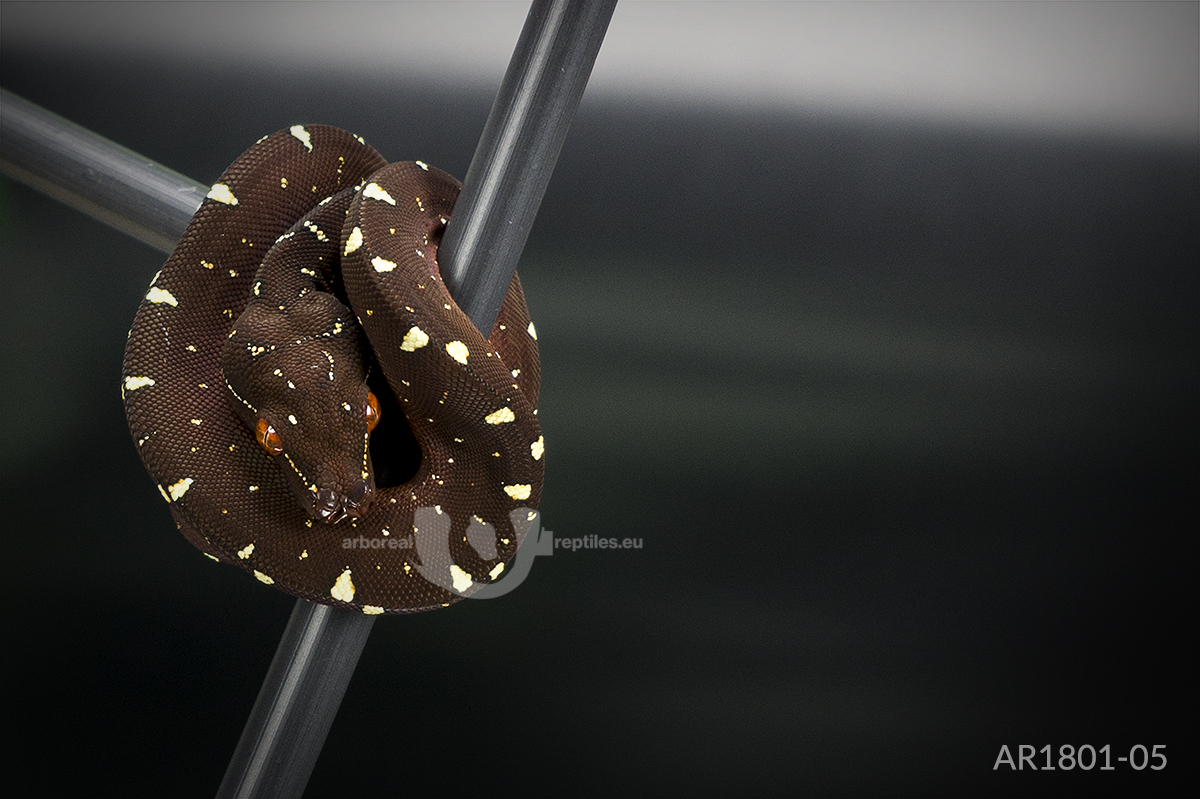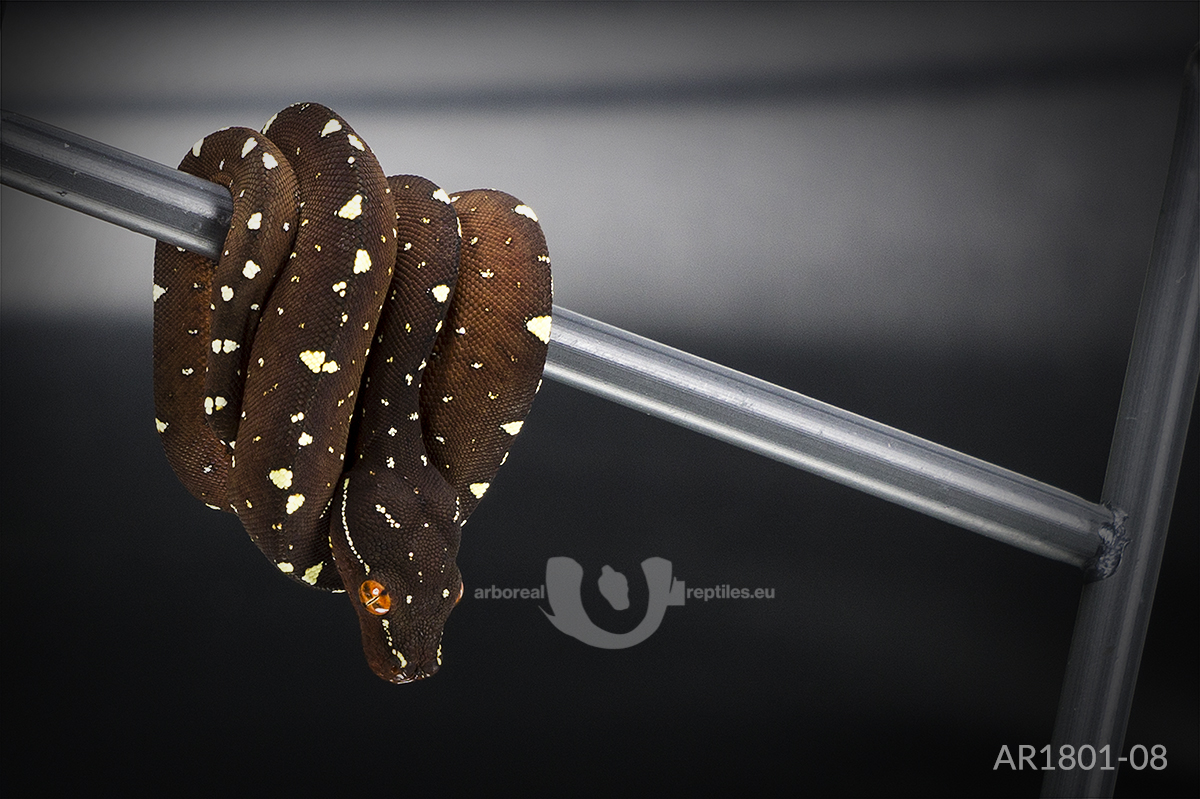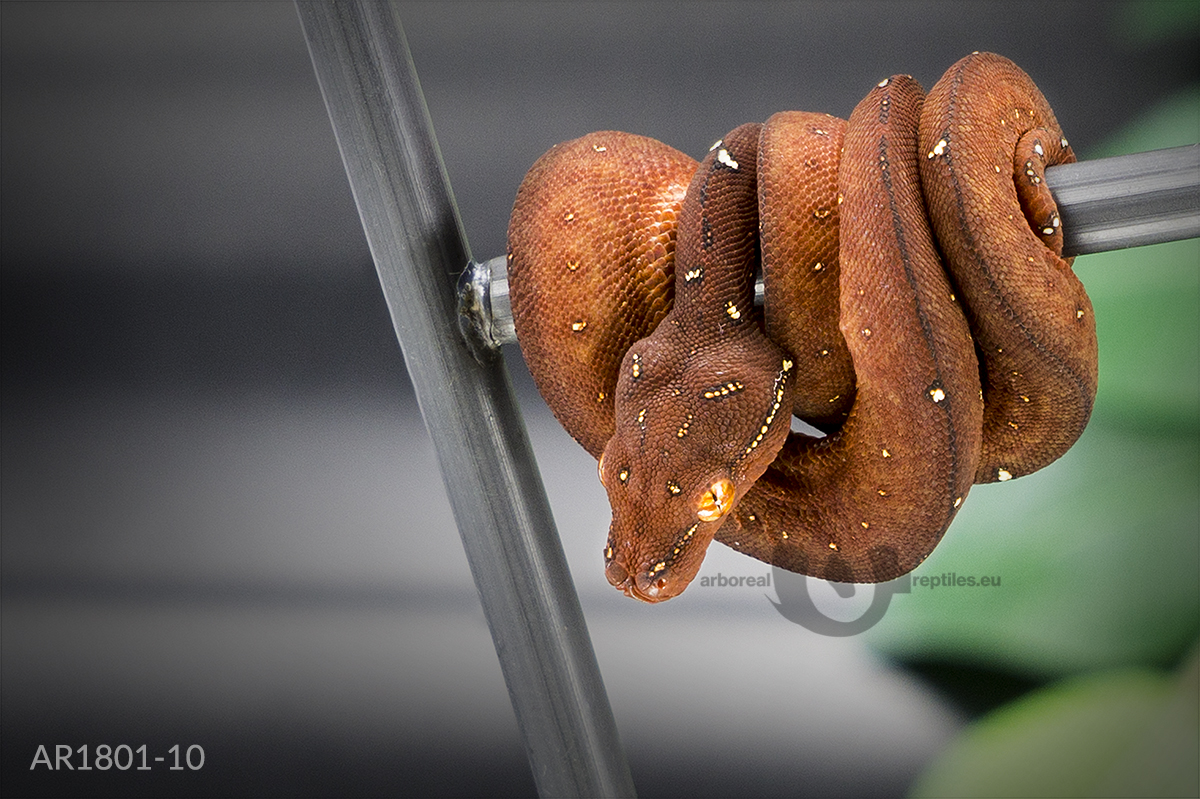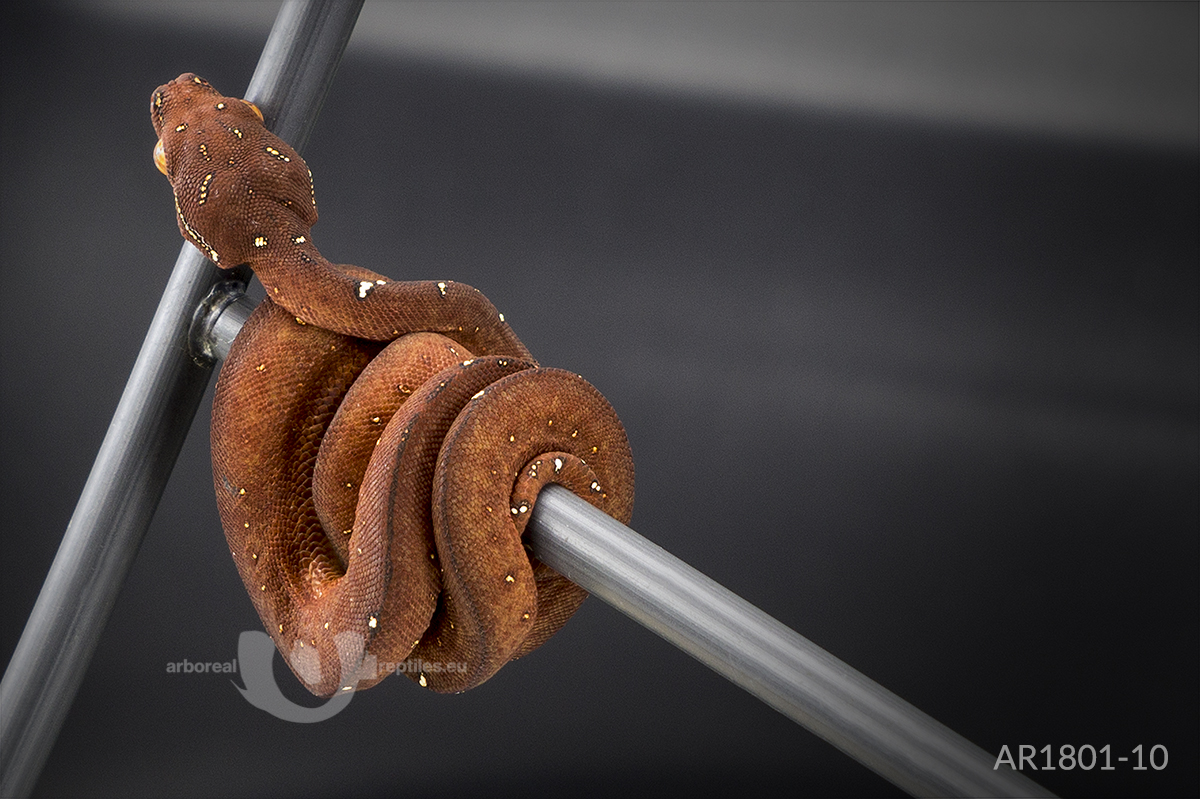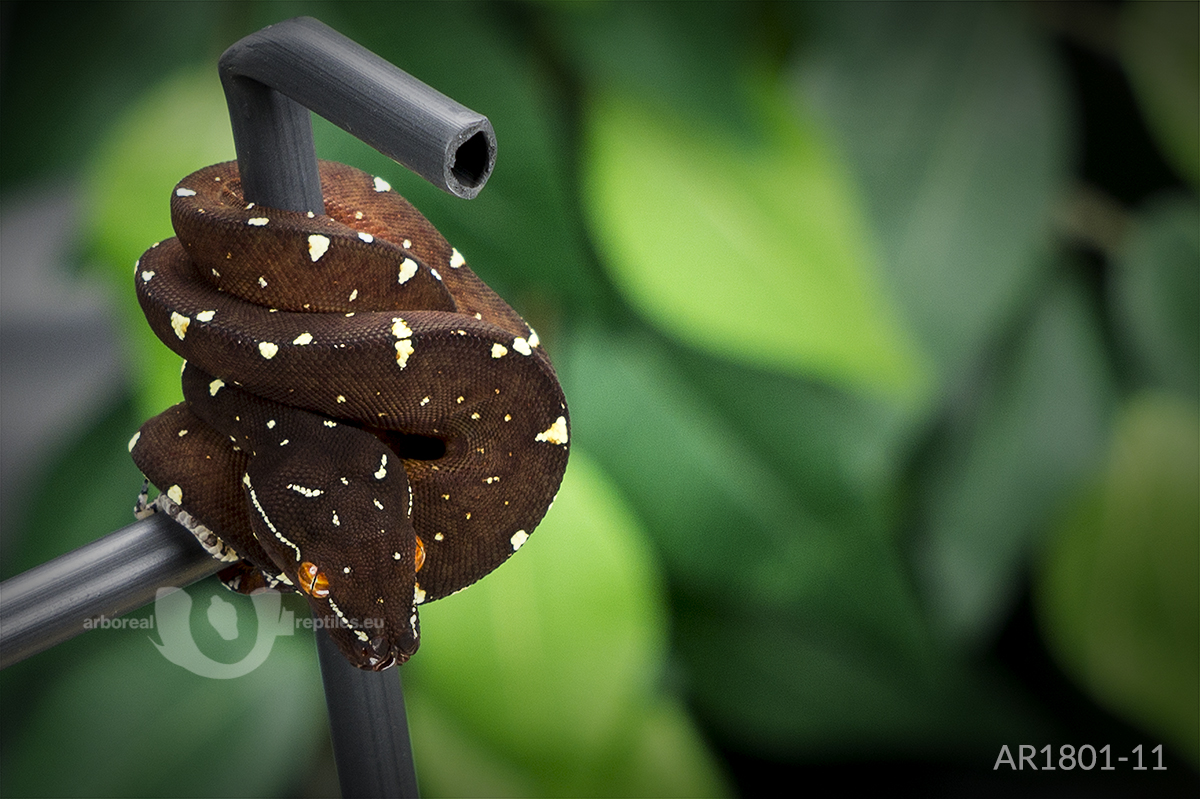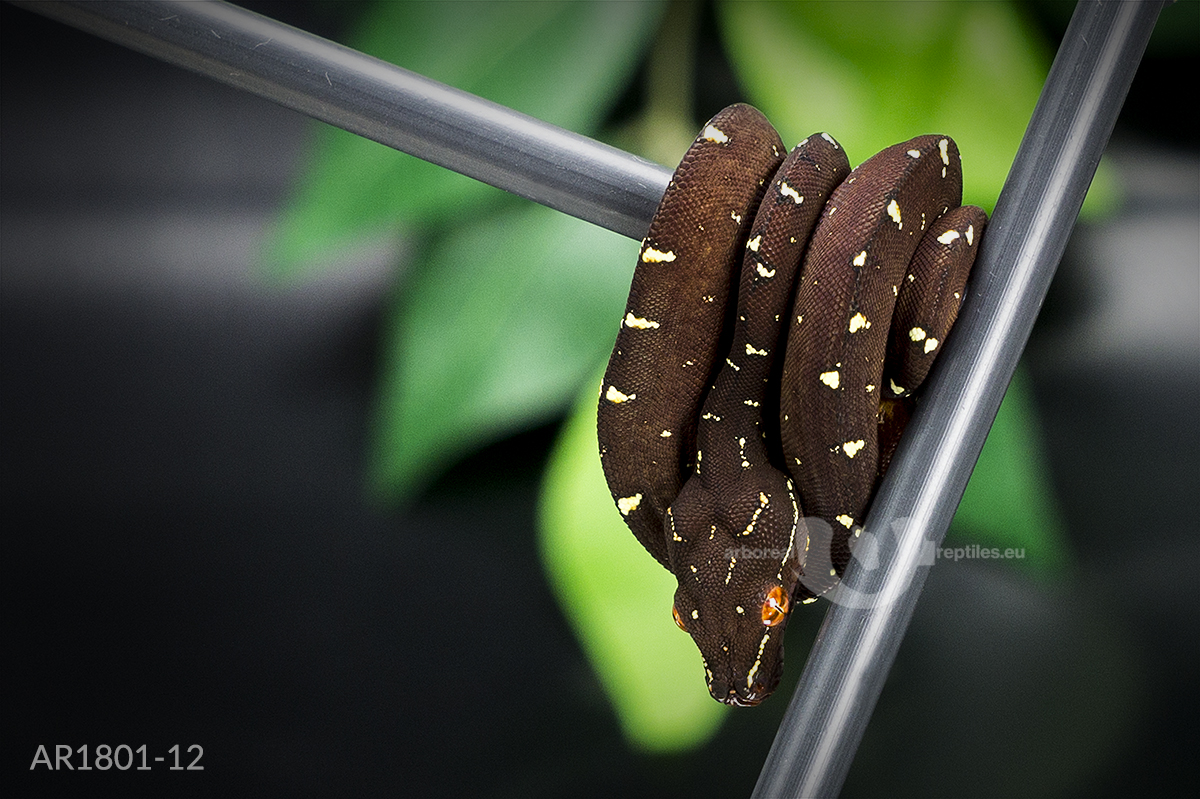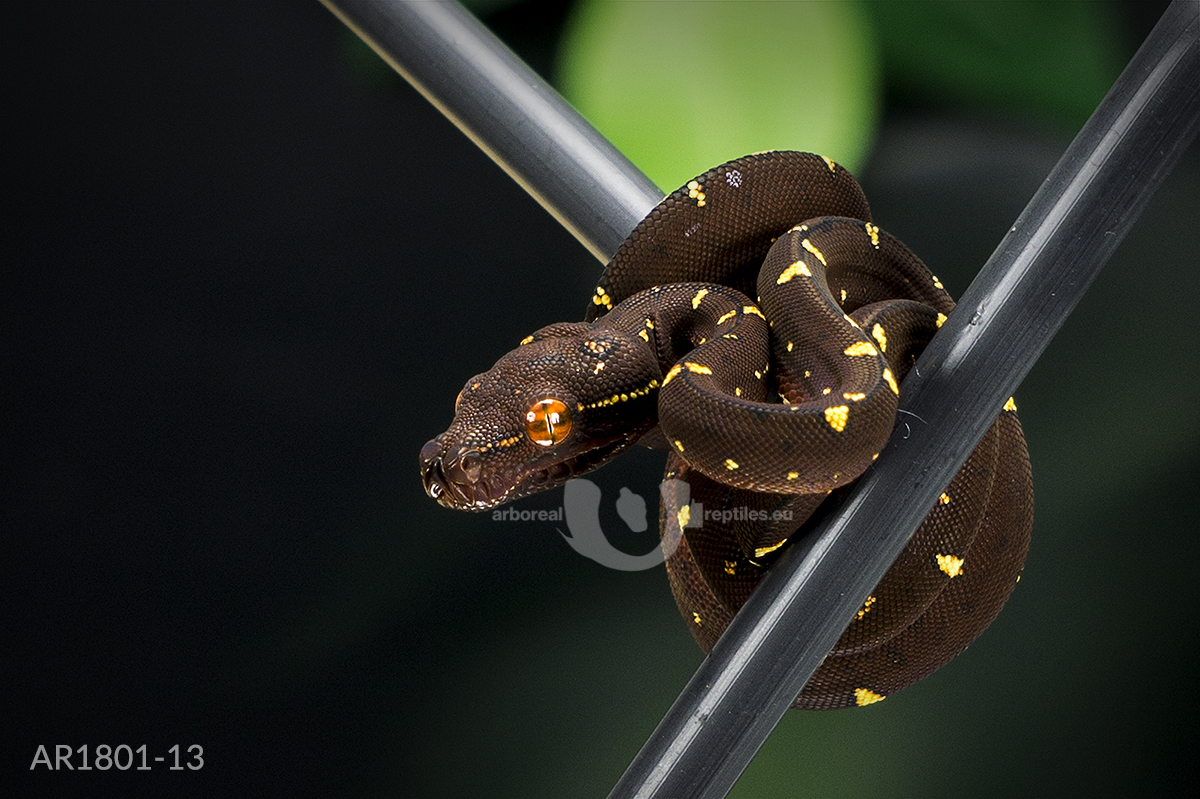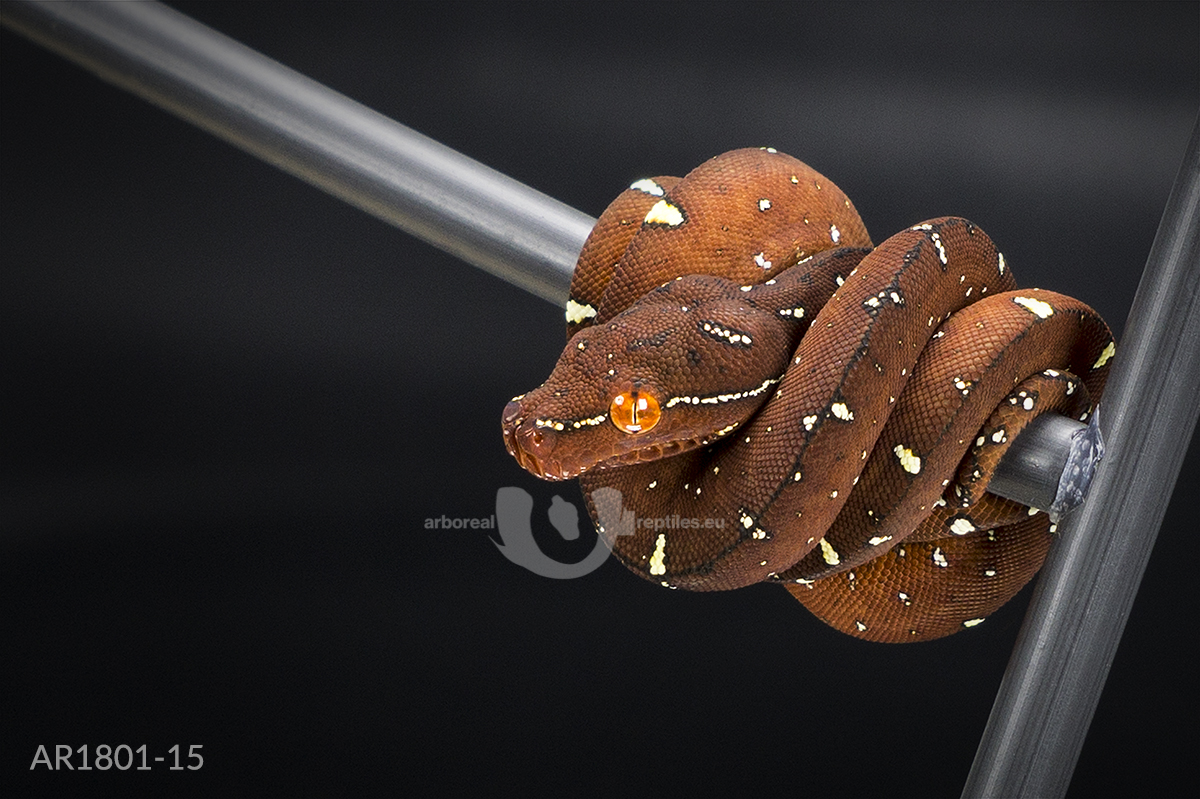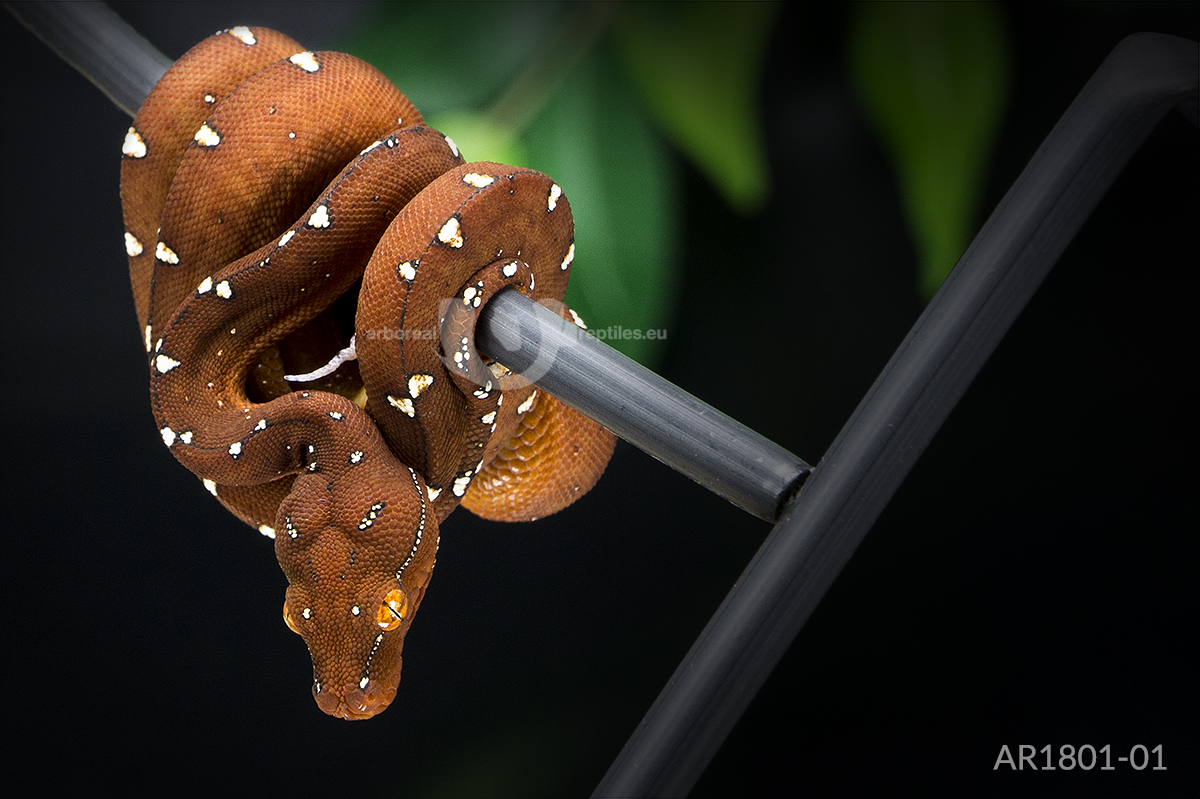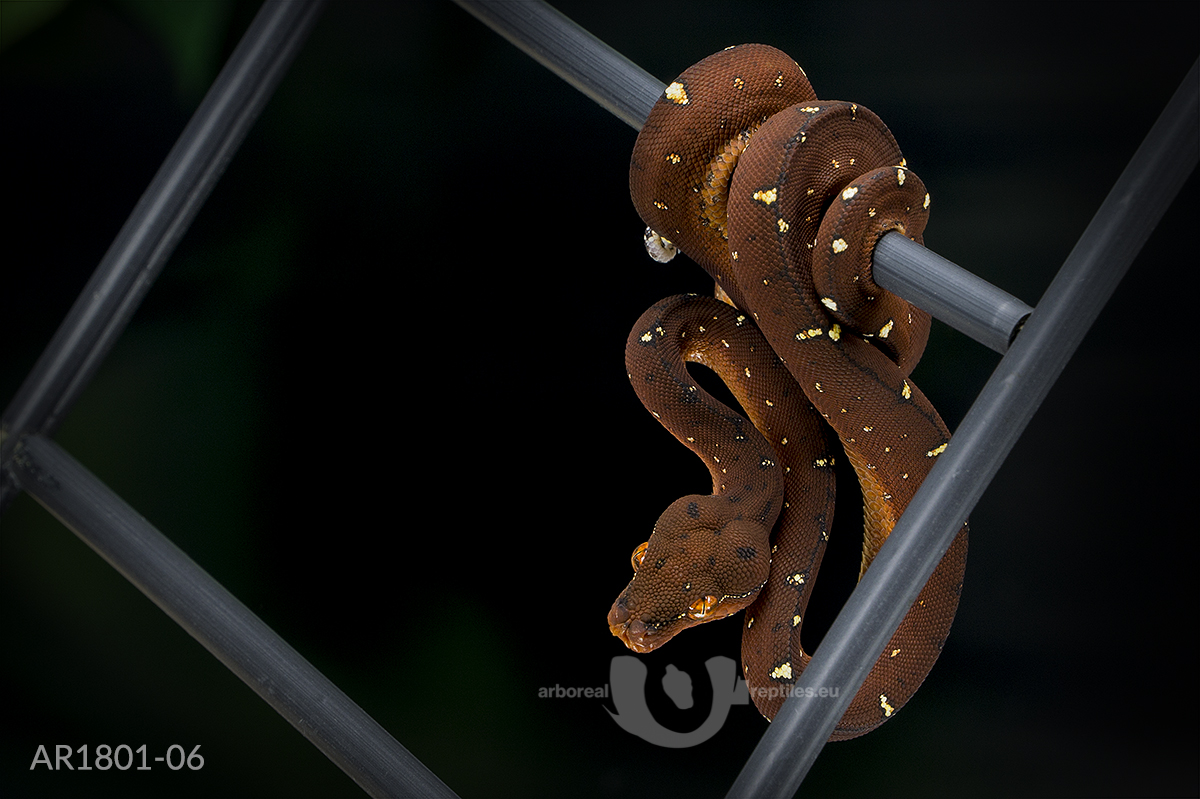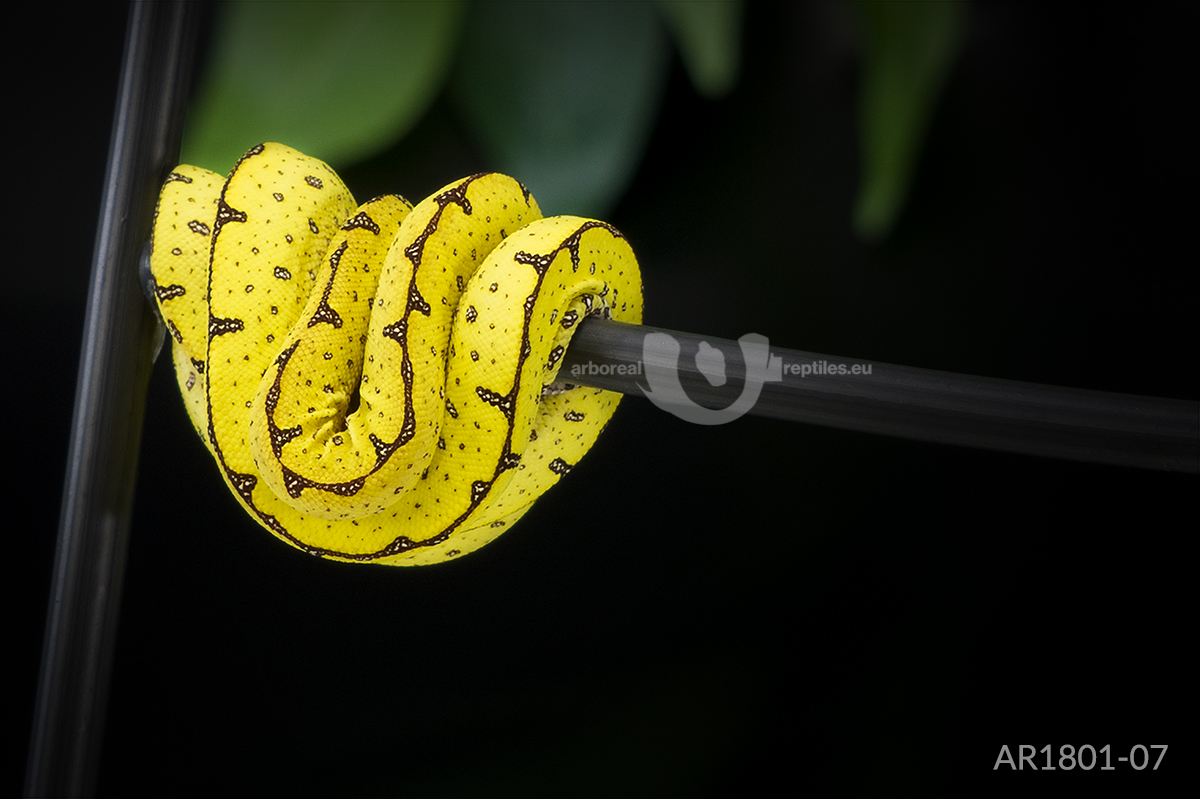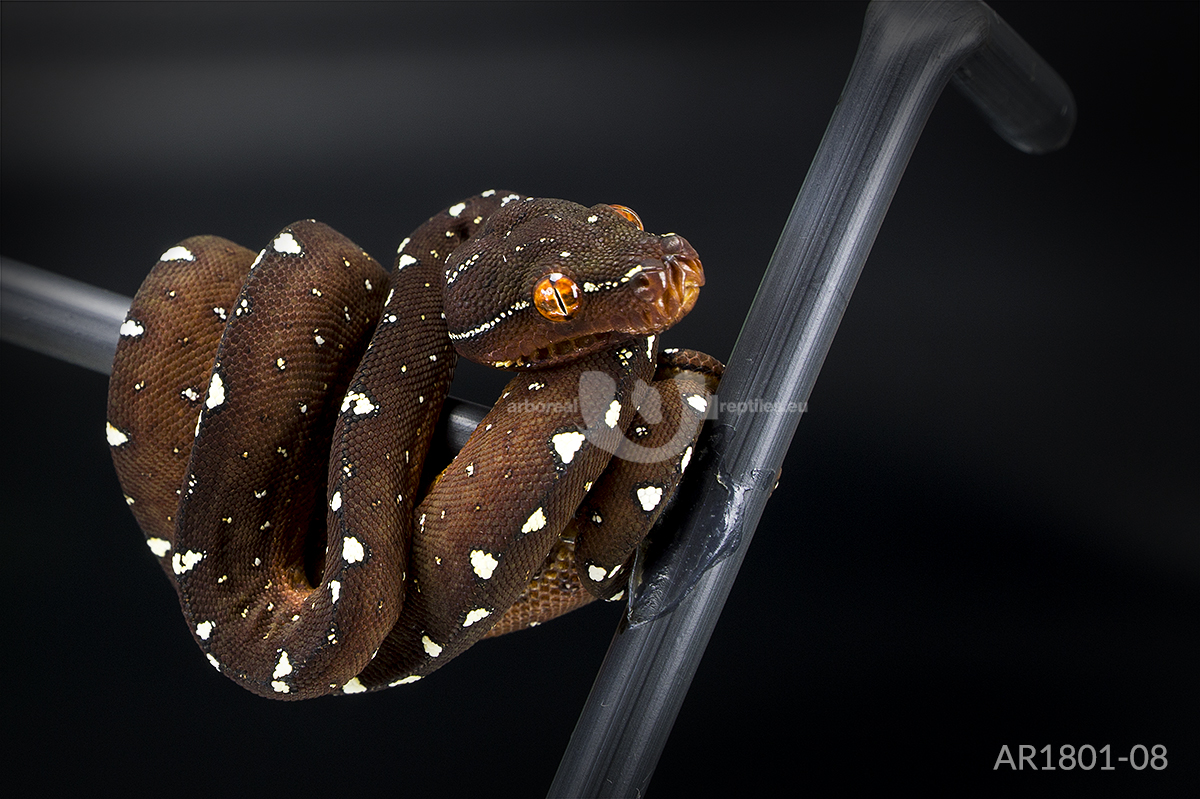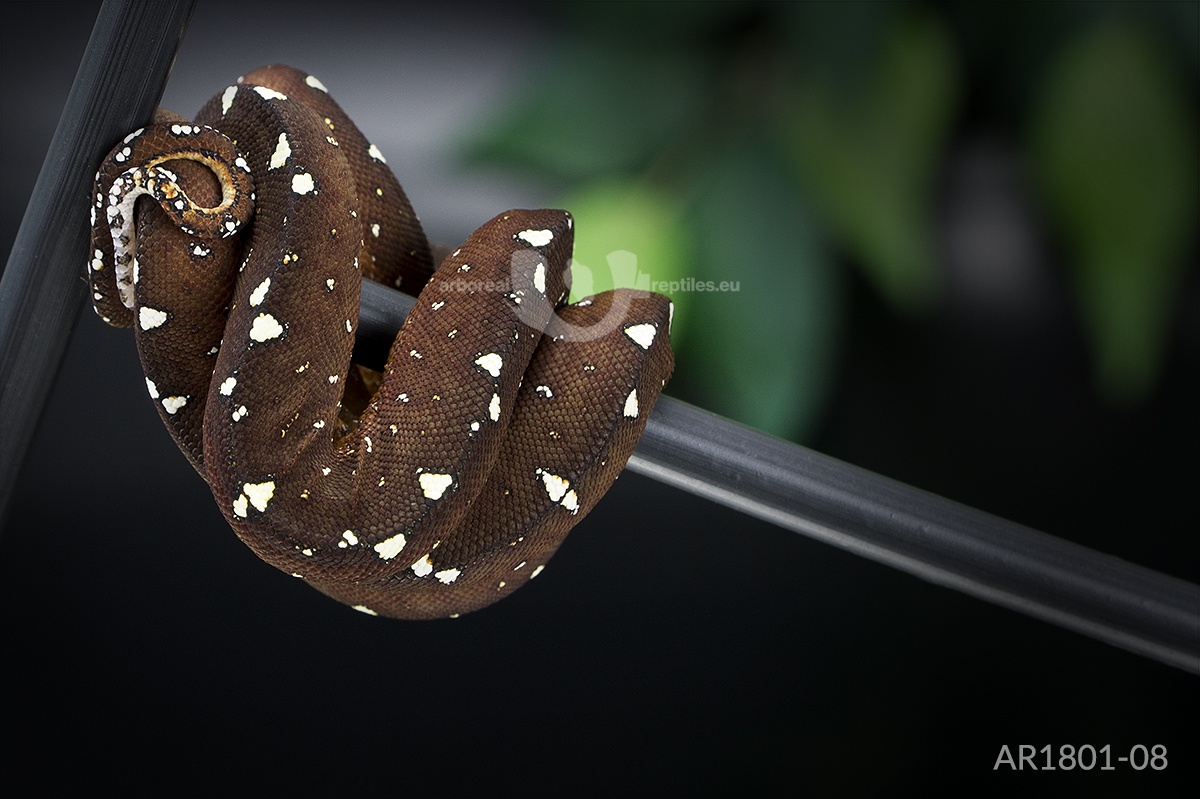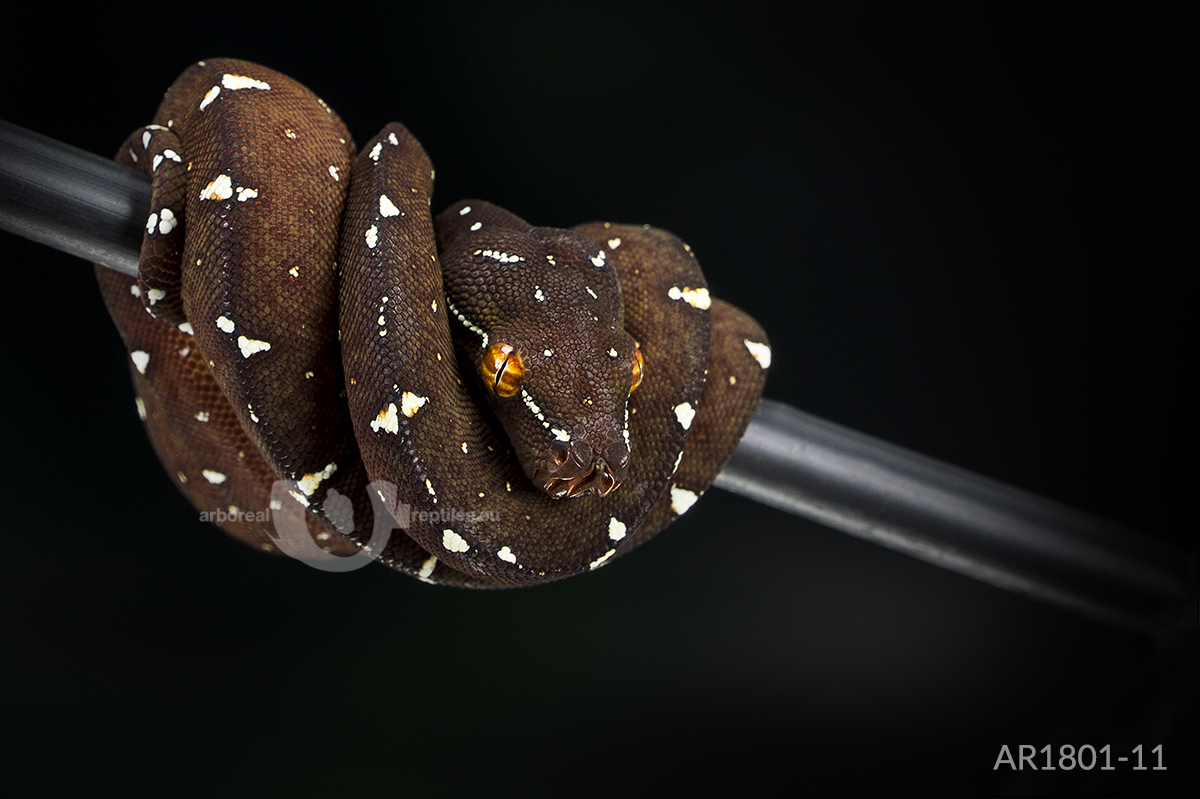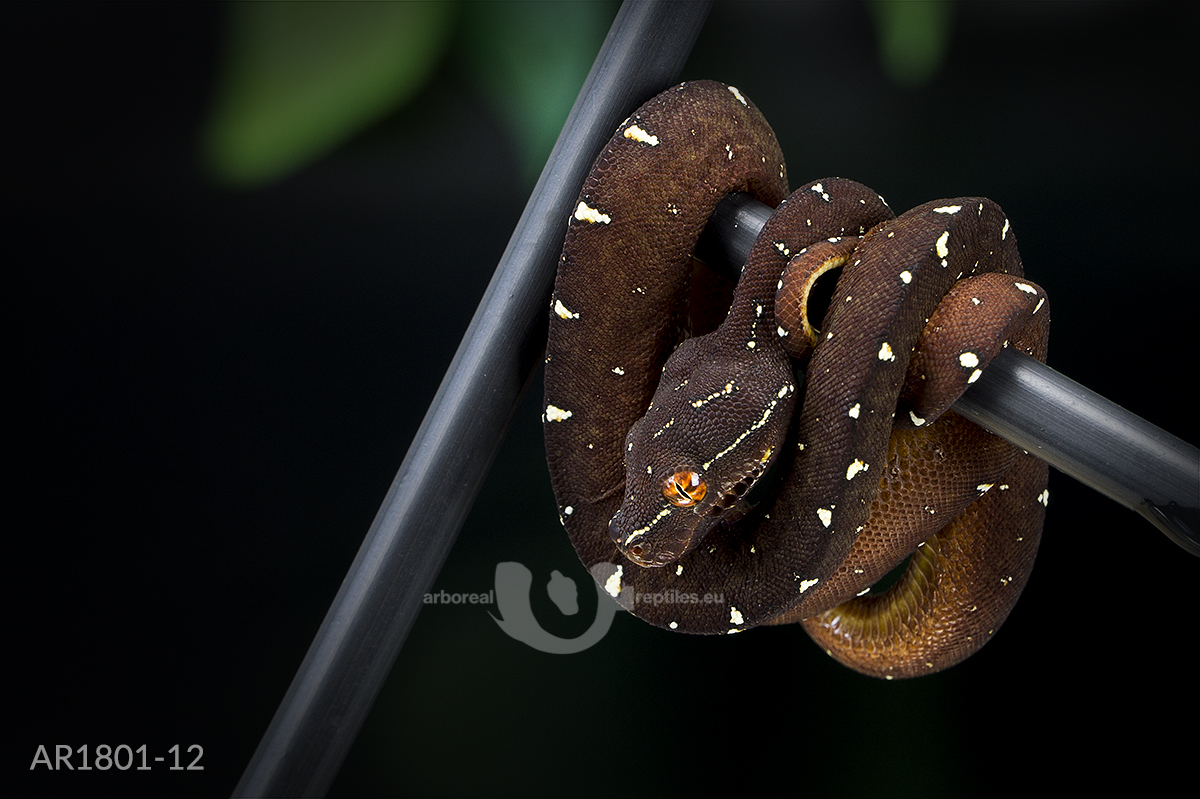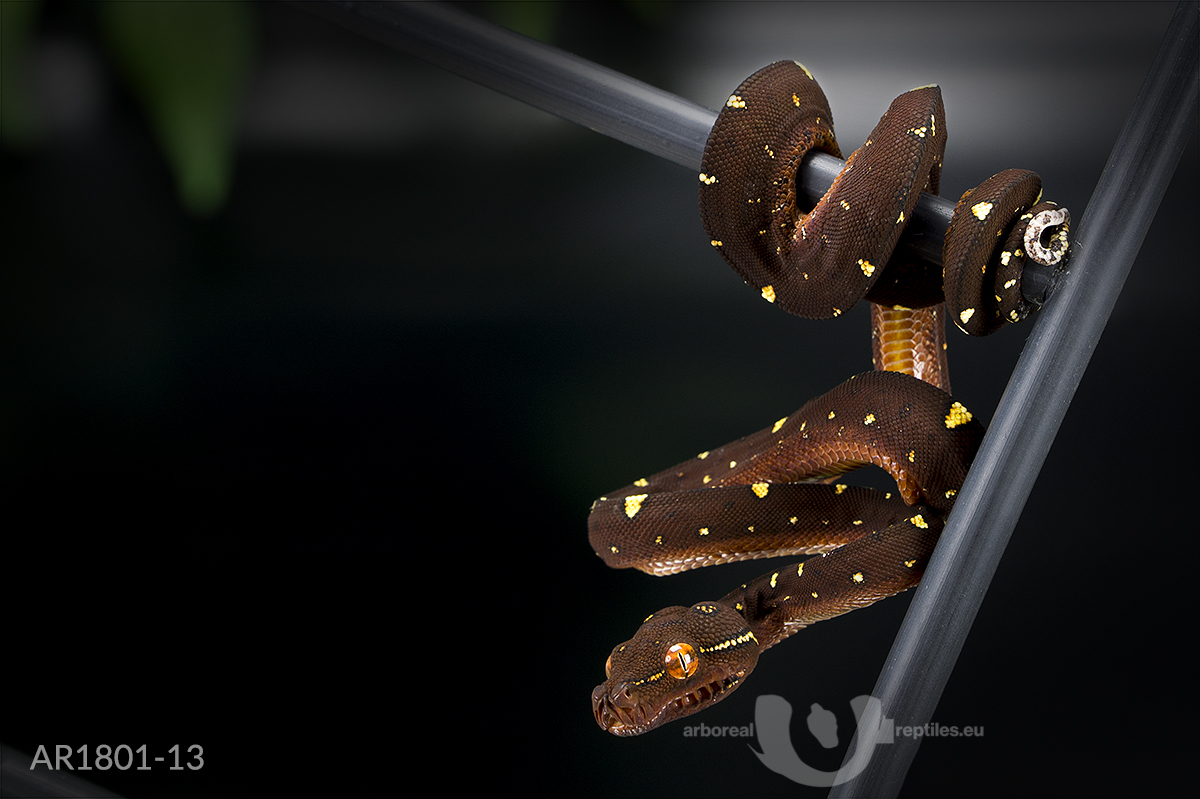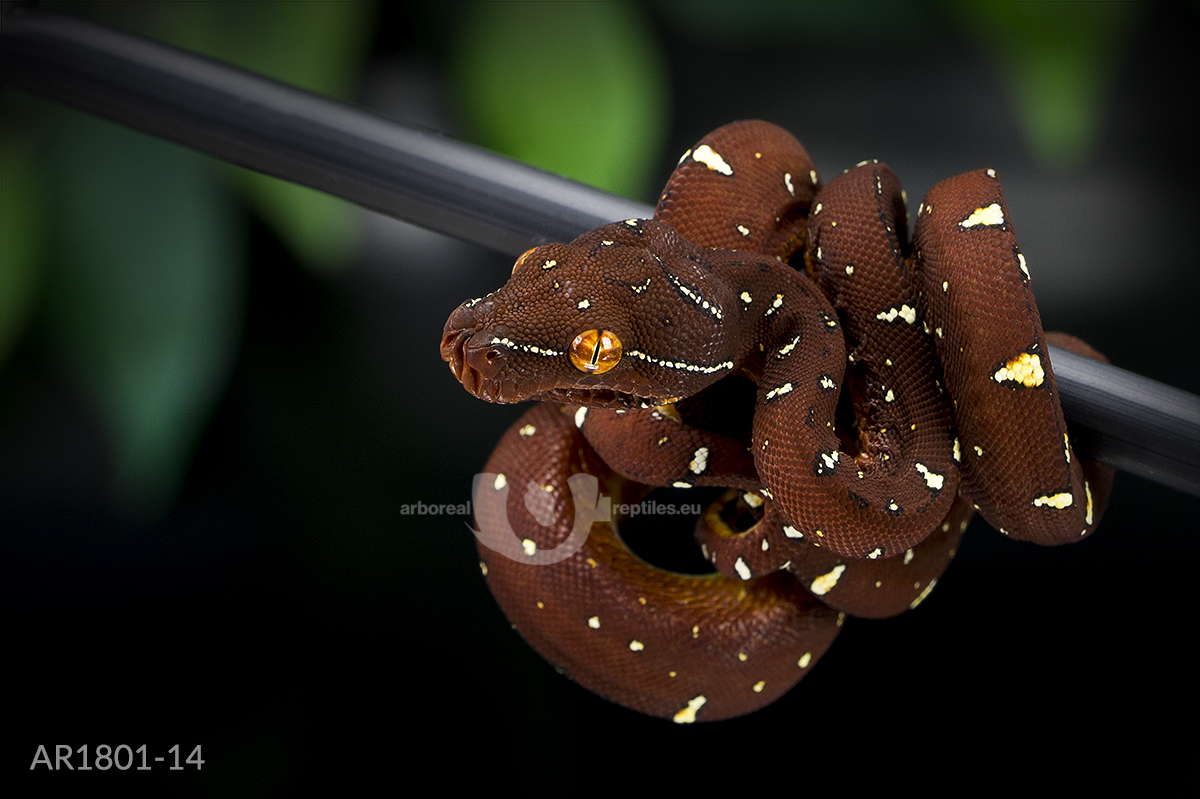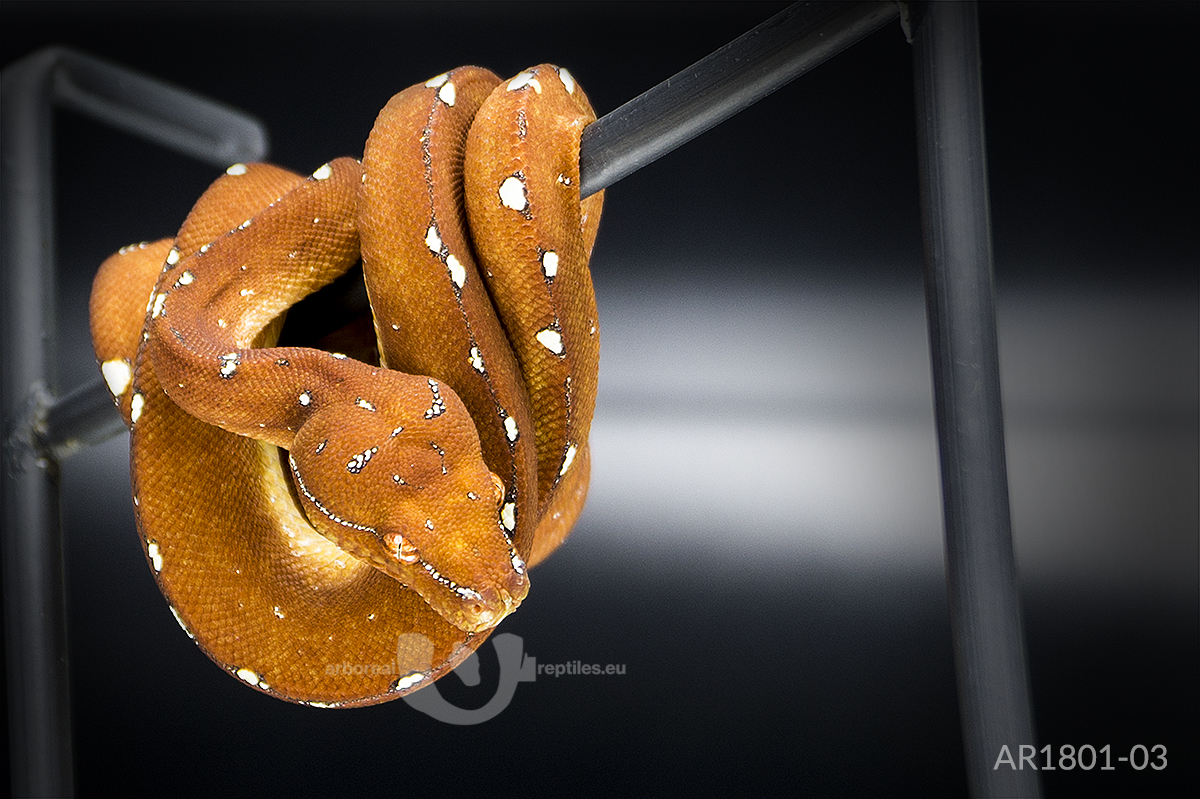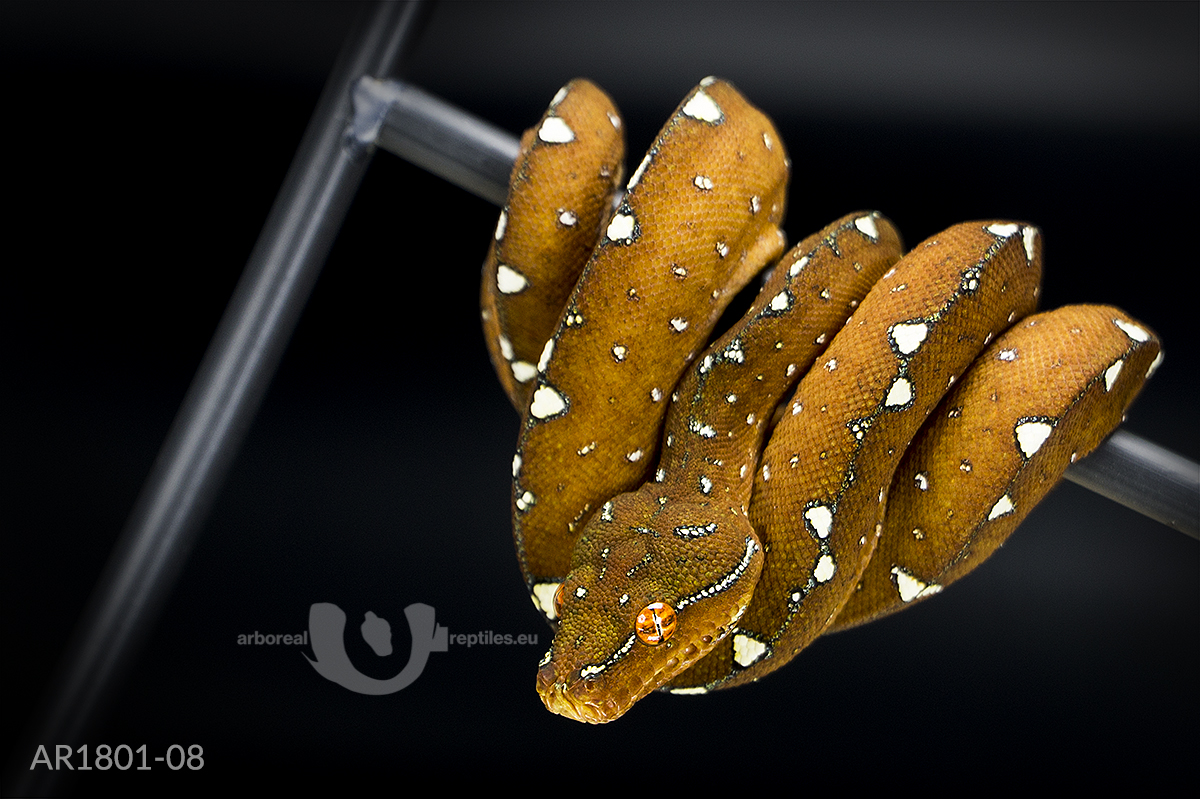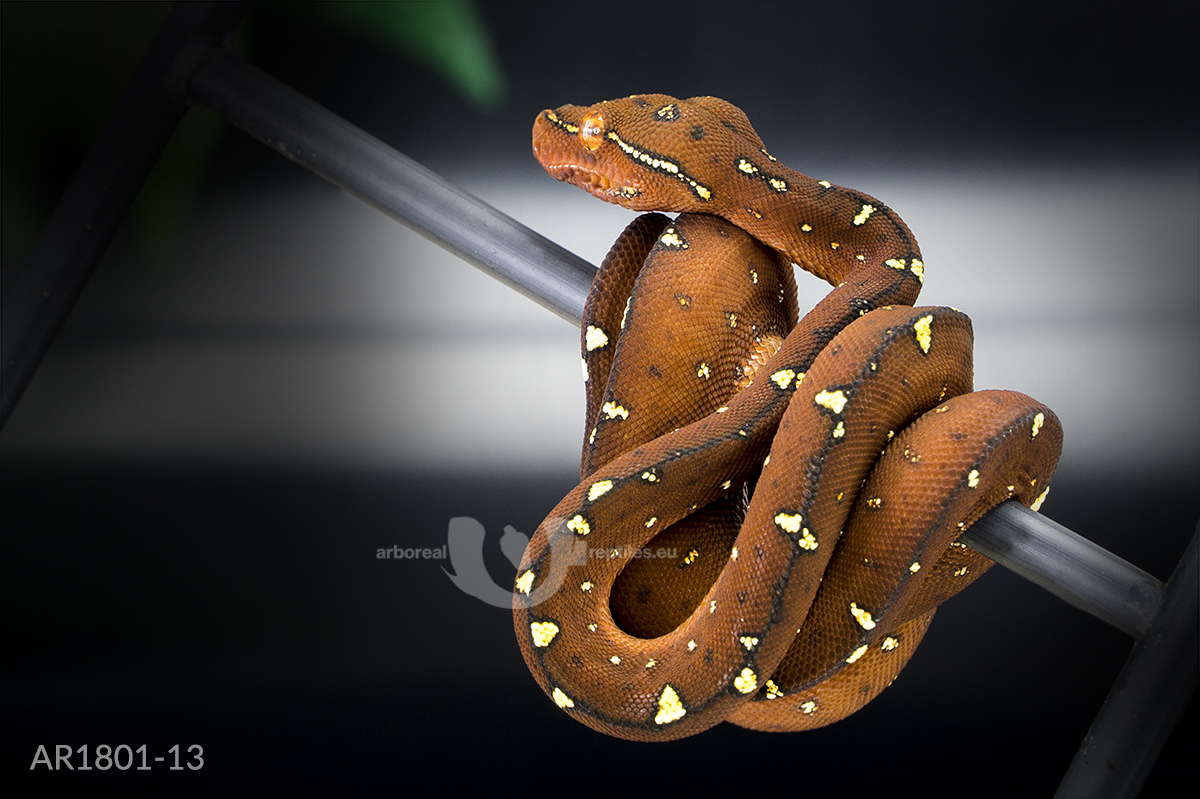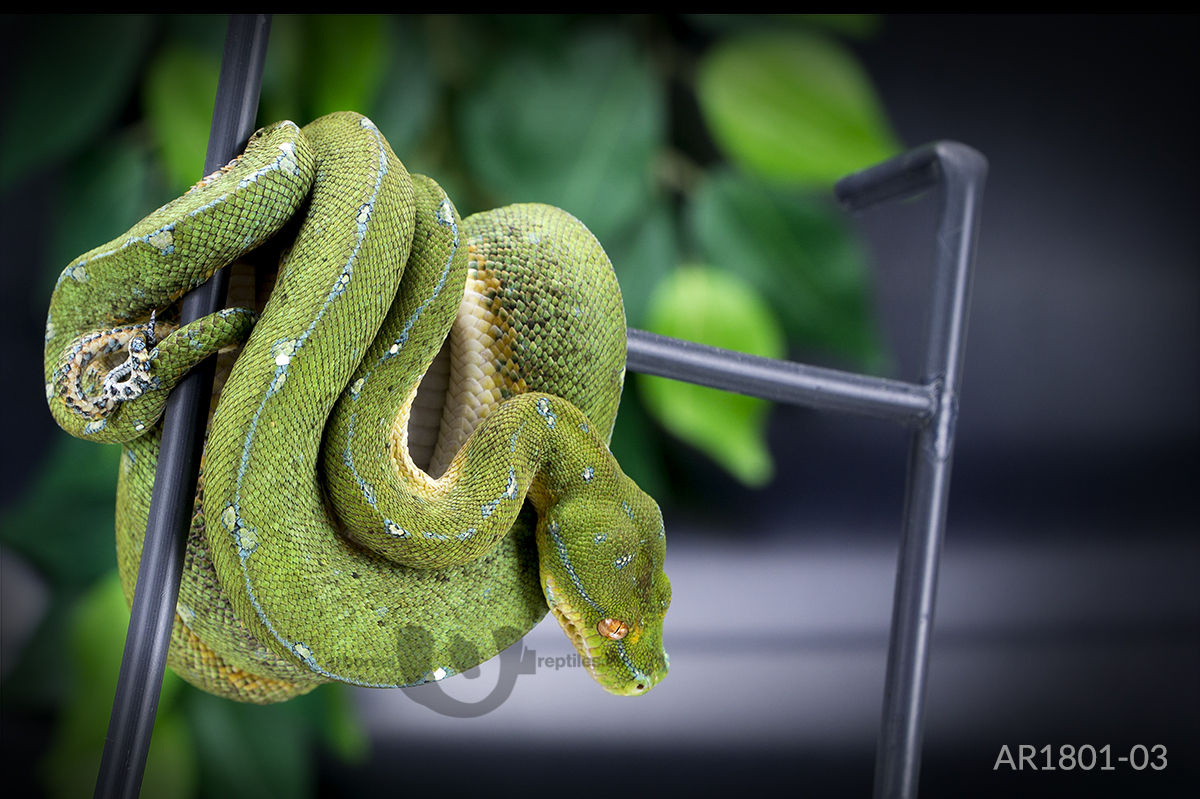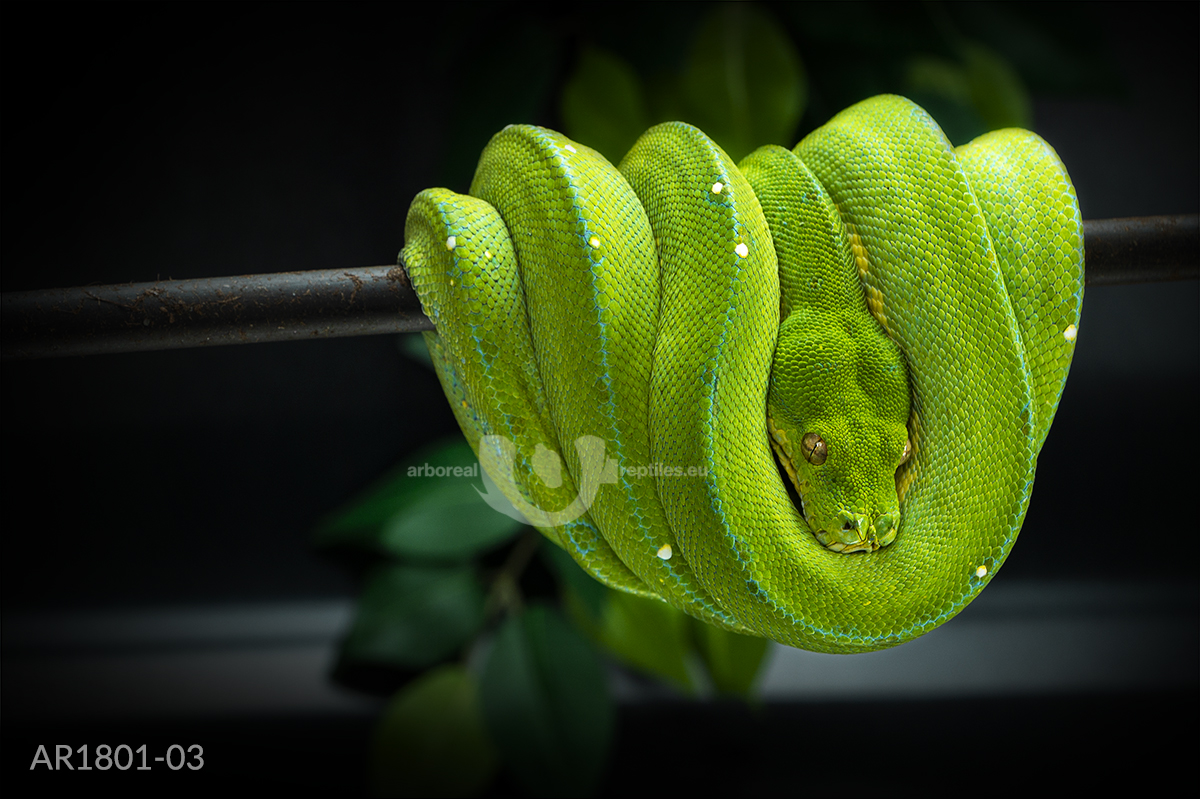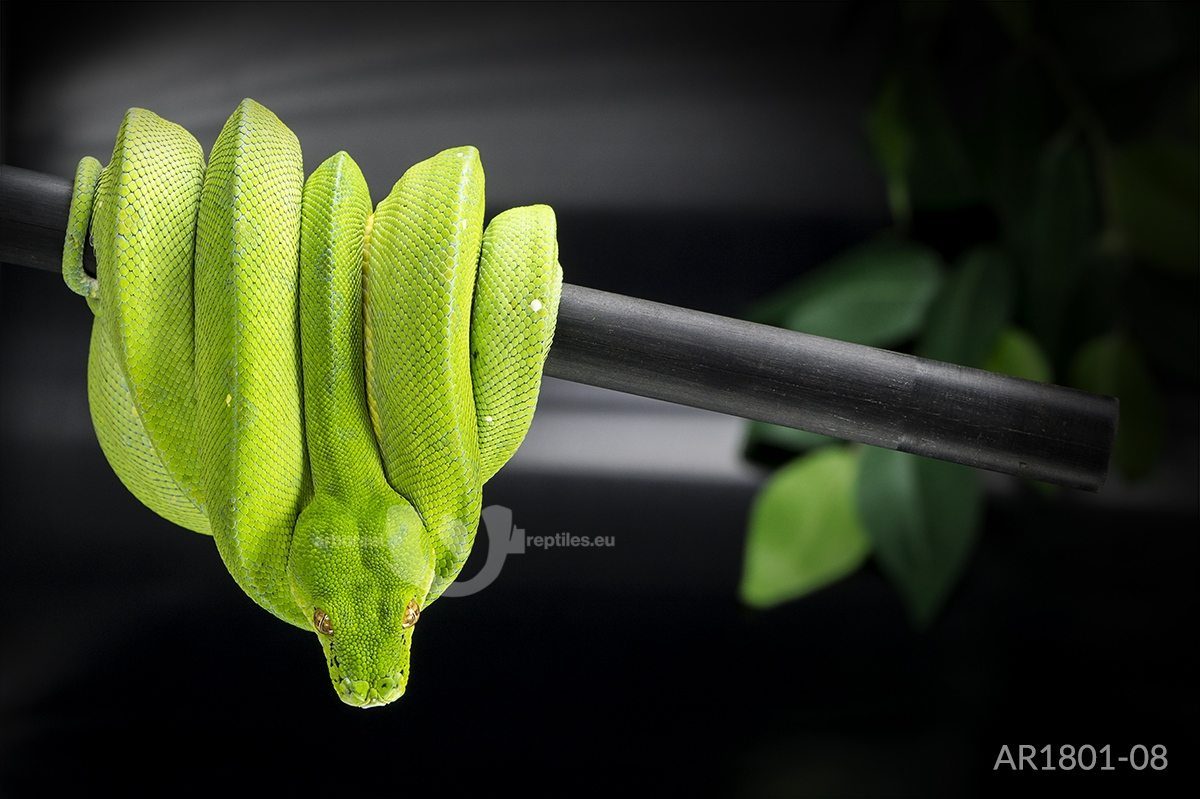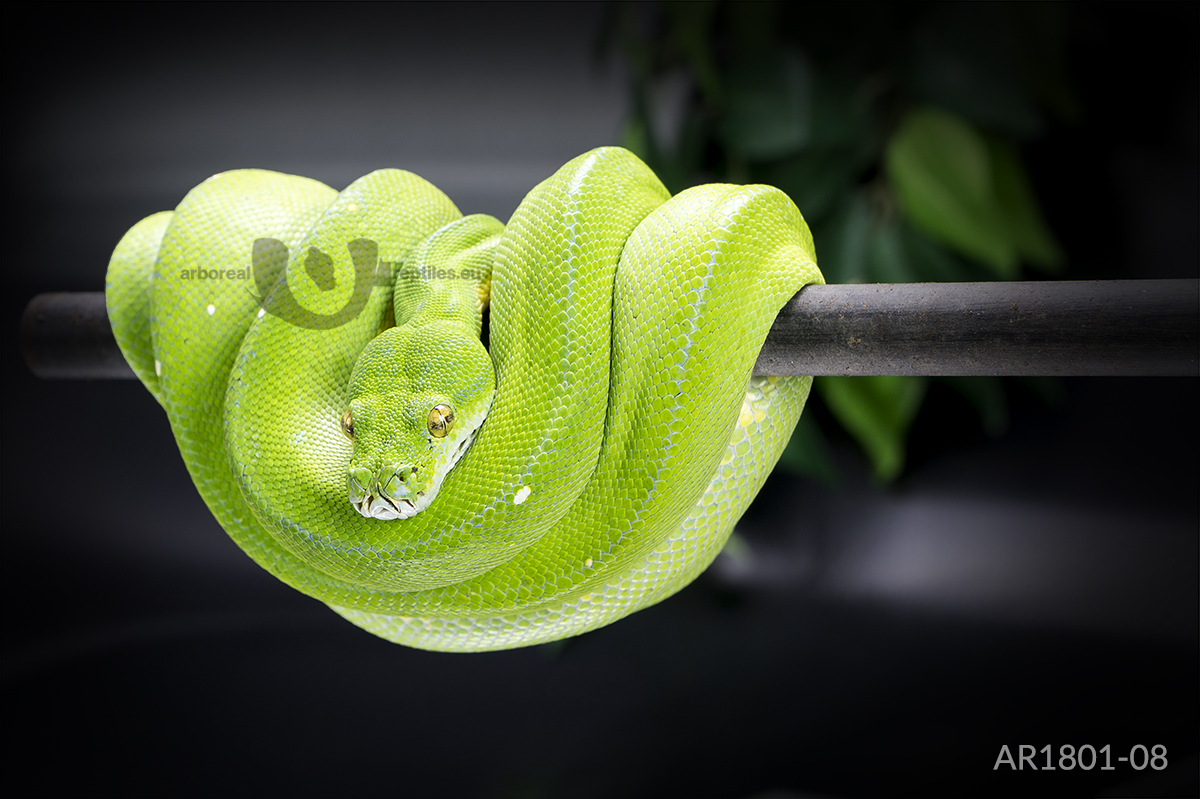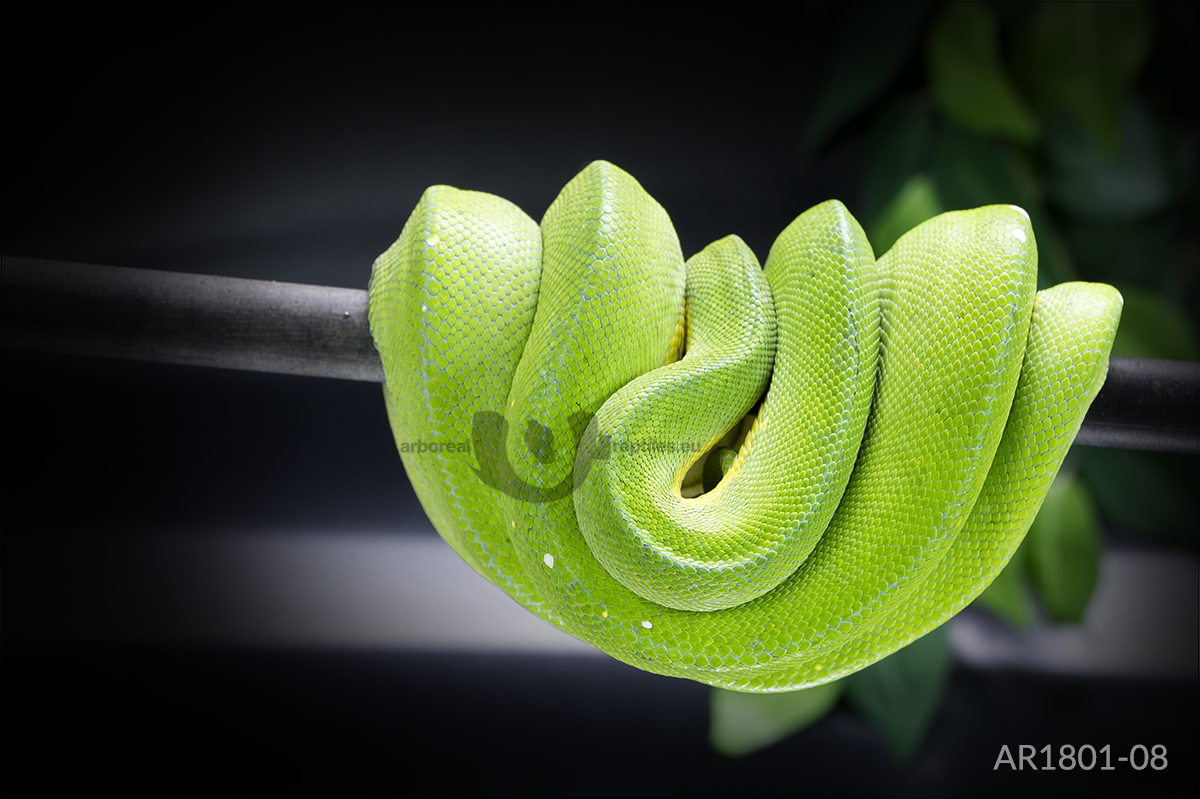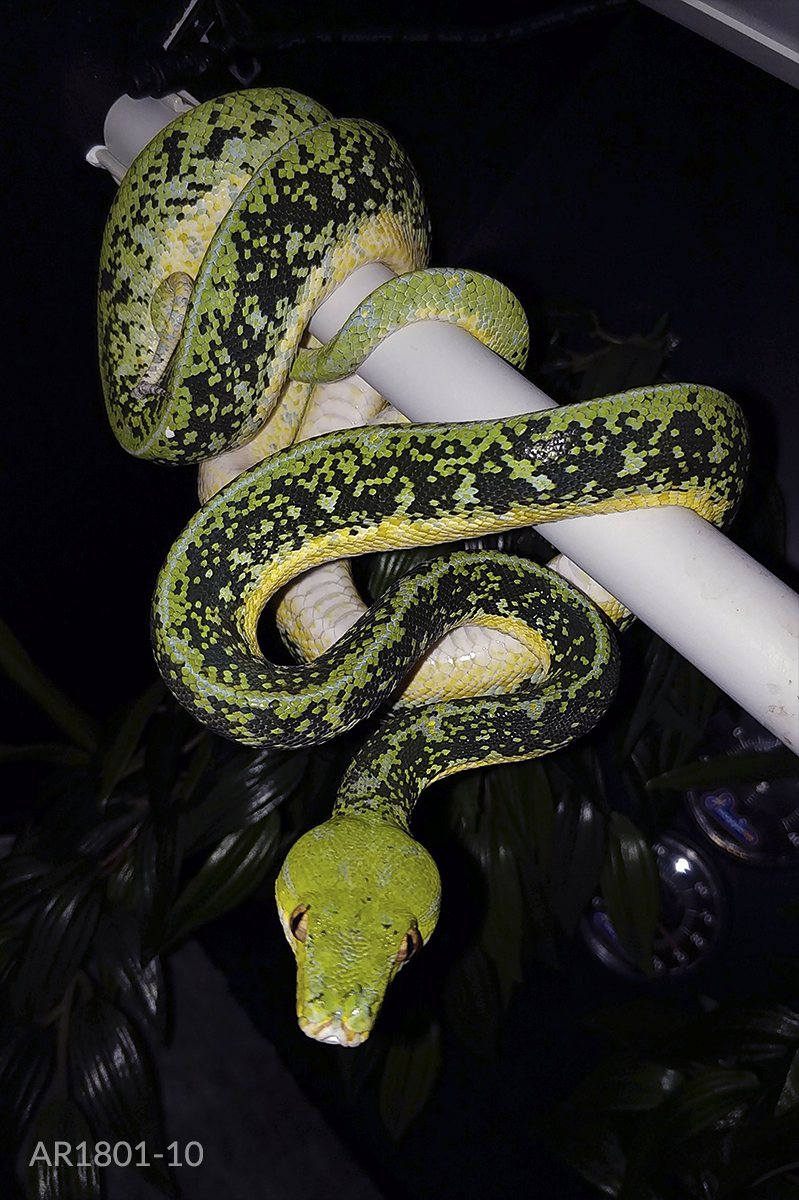Nereus x Ersa AR1801
| clutch number: | AR1801 |
| ovulation: | 15.11.2017 |
| POS: | 15.12.2017 |
| egg deposit: | 04.01.2018 |
| number of eggs: | 17 [Ø 14.74g] |
| hatchdate: | 20.02.2018 - 25.02.2018 |
| hatchlings: | 15 [Ø 8.81g] |
| neo color: | 9 maroon | 4 red | 2 yellow |
| breeder: | Arboreal Reptiles |
The clutch AR1801 is from the male Nereus (NE08-01) and the female Ersa (ER10-01). The bluish color of the male is getting more and more intense in the last years and also his male offsprings Kerberos (NL13-02) from NL13 from 2013 and AR1502-04 from AR1502 from 2015 show increasing blue. In addition AR1502-04 has numerous single black scales.
Ersa is a farm bred animal from Cyclops Mountain. Beside the typical dorsal markings her flanks are colored plane light blue. AR1801 was her first pairing and clutch. In our opinion the blue color of this female is ontogenetic. Reinforcing is the fact, that from the development of follicle until the egg deposit no change in quantity or intensity of the blue has happened.
In the mid of July we put the male into the females cage. Already the next morning we could witness the first copulation. At the end of September Ersa took food for the last time.
Until the ovulation in the mid of October we could consistently observe copulations. On the 15.12.2017 the post ovulation shed took place.
Sadly the female didn’t except the laying box. After an anxious night she spent the pre noon of the 04.01.2018 coiled up on the highest branch. She started to contract and around noon we found an egg lying on the ground. After this we put Ersa together with the branch on the top of the open laying box. She put the second egg on the border of the box, from where it dropped onto the ground also.
To save the rest of the clutch we put her tail directly onto the bottom of the laying box. Luckily she didn’t let herself get distracted and laid the rest of the clutch without any troubles. After she was done we put her and the branch in the original position and took out the box with the eggs.
Although Ersa neither tried to breed the eggs, nor formed the typical bee hive, her contraction lasted for about two weeks. After the juveniles hatched, the female shed and took food again.
On day 48 the first neo cut its egg. We decided to cut all the other eggs at this day because some already developed glassy spots two days before. On day 49 six additional juveniles hatched. Two neos hatched not until we cut the eggs again, they took until day 52 and 53.
The average hatch weight was 8.81g [the lightest weighed 6.85g, der heaviest 10.60g]. Most of the juveniles shed between day 13 to 16 after their hatch. One animal took unusually long, it shed after 53 days after taking food twice.
Update
An update of a few of the animals which are still in our care, at the age of about four to six months.





